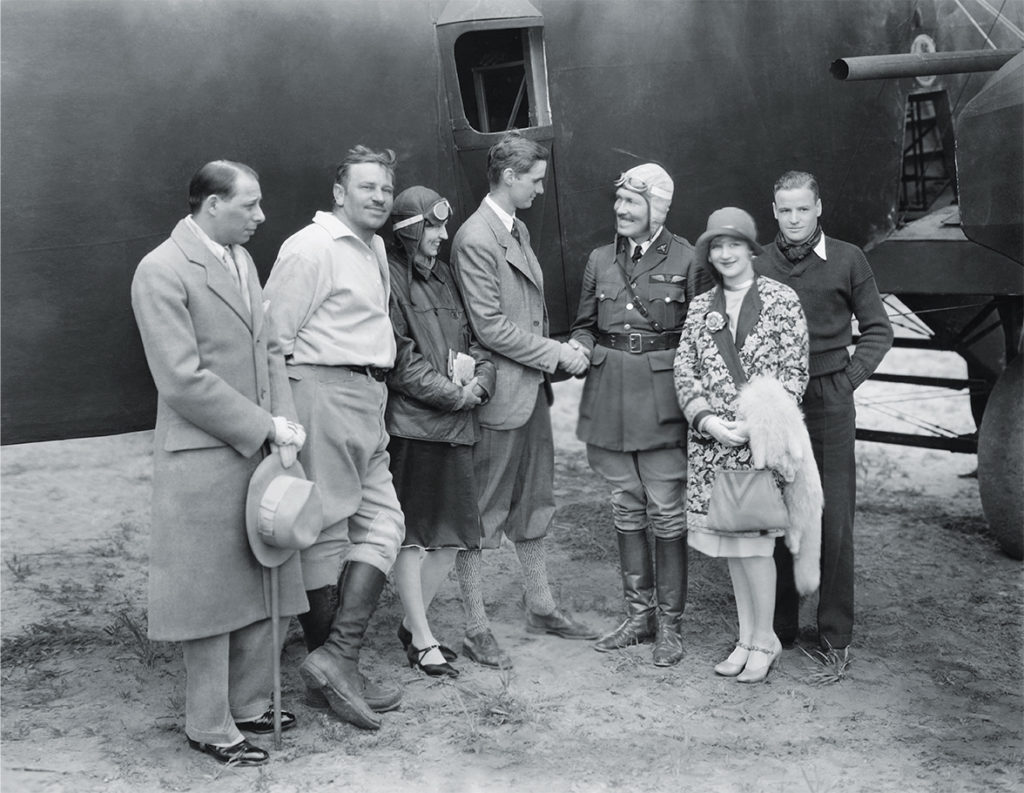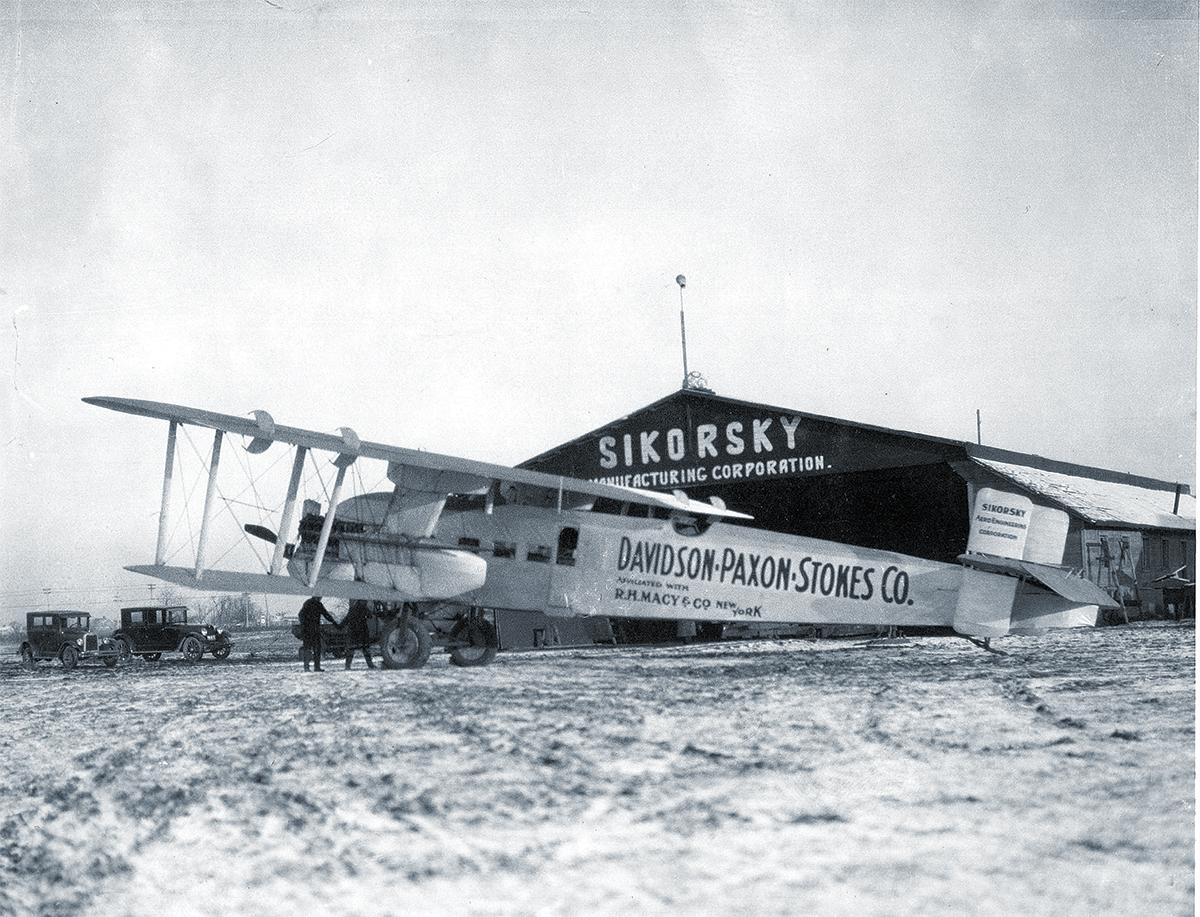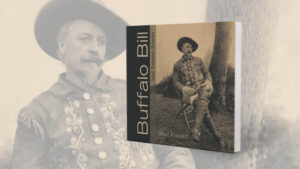In May 1926, a 23-year-old newspaper reporter named John K. Ottley tried to put Atlanta, Georgia, on the aviation map by persuading pilot Roscoe Turner to fly passengers in his Sikorsky S-29-A from the city’s unpaved airport — known then as Candler Field — to New York. Also aboard would be a $1 million check from the Atlanta Federal Reserve Bank for delivery to the bank’s New York counterpart. Things didn’t go as planned.
The Mississippi-born Turner had flown in World War I and made a name for himself afterward as a barnstormer. (He would later earn much greater fame as an air racer, winning the coveted Thompson Trophy three times.) His flamboyant style and nose for showmanship made him perfect for such a publicity venture. As one writer at the time noted after encountering Turner, “High-booted, in tan leather, coated trimly in sky blue, a tan buckskin topcoat over his arm, he looked fictitious. Anybody would have ridden his machine in a minute, skeptic or otherwise.”

The PLane
In 1926, Turner arranged to purchase the Sikorsky S-29-A for $10,000. The airplane was a one-off transport designed and built by Russian-born aviation pioneer Igor Sikorsky. The “A” in the name stood for “American,” and at the time it was the biggest airplane in the United States. Registered as NC 2756, the huge airplane had two 400-hp Liberty L12 water-cooled engines and room for 14 passengers. The pilot rode in an open cockpit above the passenger compartment, where a mechanic monitored the engines. Some credit the S-29-A with being the first twin-engine airplane able to maintain altitude if one engine failed. Turner would put this to the test.
In those days, airplanes were rare enough that people still looked up when one passed overhead. Turner took advantage of this by using the Sikorsky as a flying billboard. His client in 1926 was Davison-Paxon-Stokes, an Atlanta department store that had been acquired by Macy’s. Turner had the store’s name painted in giant letters on the Sikorsky’s fuselage.
The Plan
On May 23, Turner landed at Candler Field with a cargo of the latest in women’s dresses from New York. While there, he was interviewed by an Atlanta Journal reporter who also chaired the Aviation Committee of the city’s Junior Chamber of Commerce. In his role as aviation booster, Ottley asked Turner whether, since he had to fly back to New York anyway, he would carry passengers, which would be the first commercial passenger flight between the two cities. In addition, the Federal Reserve check would prove that transferring funds by air would bene-fit the banking industry and its customers. Turner, who already had his eye on Atlanta’s potential for air travel and was alert to potential new business, quickly agreed to the idea.
Dawn was still 62 minutes away at 5 a.m. in Atlanta on May 27, when passengers stepped aboard Turner’s Sikorsky at Candler Field for what they hoped would become a milestone in aviation history. In addition to Ottley, they included city councilman William Berry Hartsfield, national Jaycee president Robert Emmett Condon, Atlanta businessman Robert Leroy Harwell and a 20th Century-Fox news-reel cameraman. James Maxwell, Turner’s mechanic, was also aboard.
the Landing
About two hours into the flight, Turner noticed that one engine was overheating. He decided to make a precautionary landing near Abbeville, South Carolina, 255 miles short of his intended first stop at Fayetteville, North Carolina. He touched down on the farm of L.A. Jackson at 7:10, braking to a halt with one wing almost nestling in an apple tree about 150 feet from the farmer’s back door. The cameraman was the first passenger to exit.
“We just dropped in to pick some apples!” he yelled to Jackson. All the shocked farmer could muster in response was, “Sorry, mister, but they ain’t ripe yet.”
The forced landing drew a large crowd — so many people, in fact, that they drank the poor farmer’s well dry. Things improved for him when an entrepreneur set up a stand to sell cold drinks and ice cream and paid the farmer a percentage of the proceeds. Another farmer, duly impressed, promised to donate land for an airport.
Turner discovered that a water-cooling hose had worked loose, causing the engine to overheat. He also found a frayed rudder cable. While Maxwell repaired the airplane, Turner took a train back to Atlanta, where he climbed aboard another airplane he owned, a French Breguet, and flew back to the farm. Bad luck continued to dog him, though. As he attempted to land in the field, some spectators dashed in front of the airplane. Turner swerved, ground-looped, and broke his landing gear and propeller.
The Second Takeoff
He would have to deal with that later. Now he was focused on getting the Sikorsky back into the air. Turner had some areas of the field leveled so he could take off in the repaired airplane, but he was not sure he could get airborne fully loaded. Someone in the crowd told him of a large grain field in Calhoun Falls, some 15 miles to the southwest. He guessed it was suitable for landing. Turner had his passengers driven there while he and Maxwell got the big Sikorsky back into the air and headed for Calhoun Falls. As the airplane approached, it panicked a farm worker driving a wagon through the grain field. Thinking he was in mortal danger from the low-flying airplane, he whipped his mules and dodged back and forth. A bystander drove his car into the field to calm the worker and get him out of Turner’s way.
After landing and reloading the passengers, Turner was off again. Before long, one of the passengers noted smoke coming from the troubled engine. Turner circled back and landed. Maxwell determined that the previous overheat had cracked a piston, leaking oil into a combustion chamber. Unsure how long it would take to get spare parts and make repairs, Turner cancelled the flight. It would take a couple days for Turner to get the Sikorsky flying again. Atlanta had to wait to get scheduled passenger service (but not to New York) until September 1928, when Florida Airways flew some passengers in and out of Candler Field.
Turner later leased his Sikorsky to millionaire Howard Hughes so it could be painted to resemble a German Gotha bomber for Hughes’ film “Hell’s Angels.” (The movie’s publicity department claimed the airplane was, in fact, an actual Gotha.) Through legal chicanery, Hughes claimed he had purchased the airplane. On May 22, 1929, the Sikorsky, with another pilot at the controls, crashed doing a stunt Turner refused the fly. The pilot bailed out, but his mechanic was killed.
One final detail: John K. Ottley, the young newspaper reporter on the attempted flight to New York City, was the author’s father.
historynet magazines
Our 9 best-selling history titles feature in-depth storytelling and iconic imagery to engage and inform on the people, the wars, and the events that shaped America and the world.







